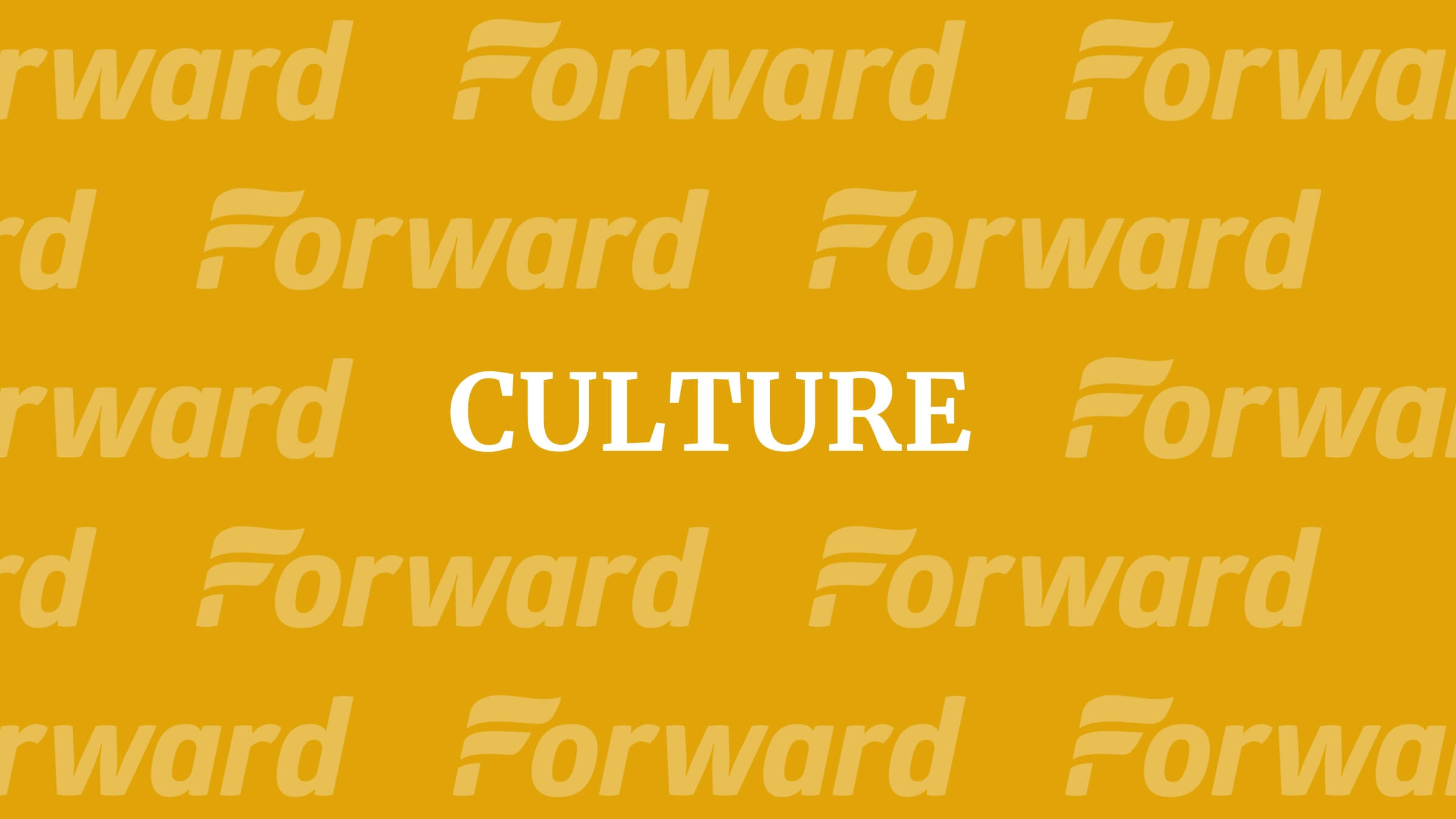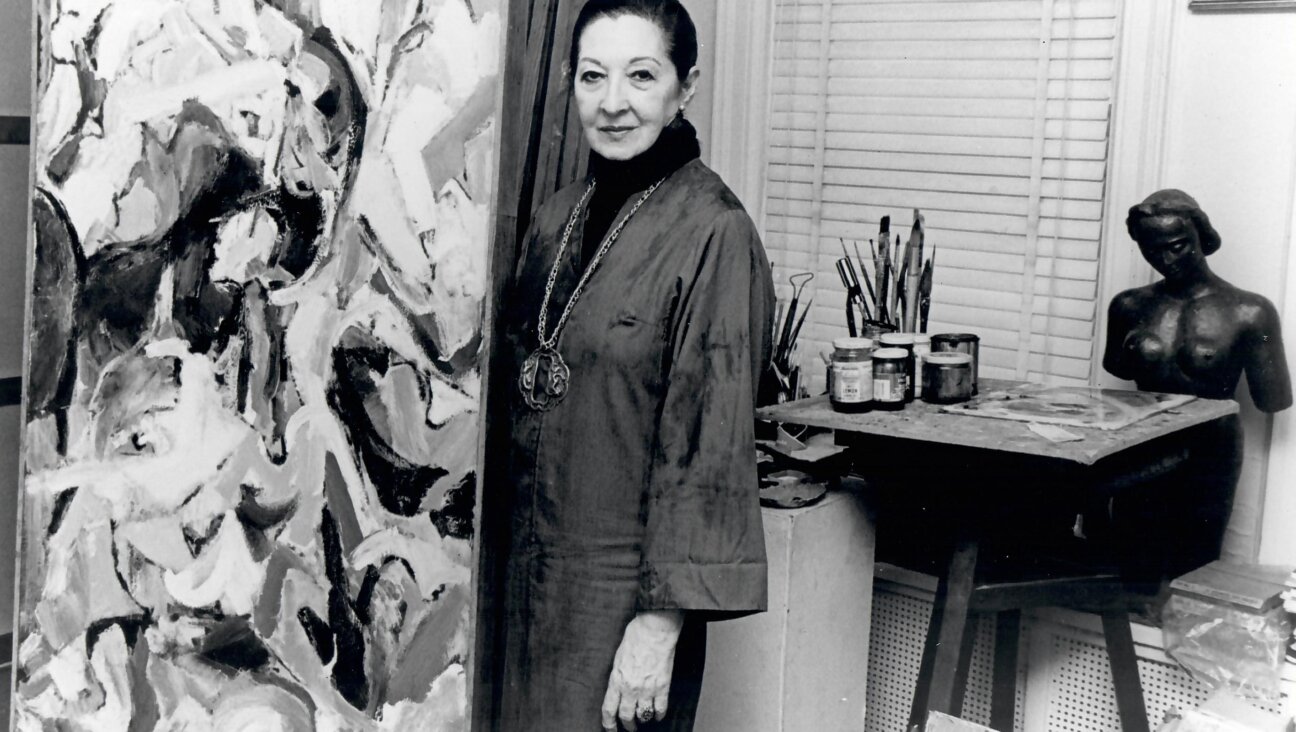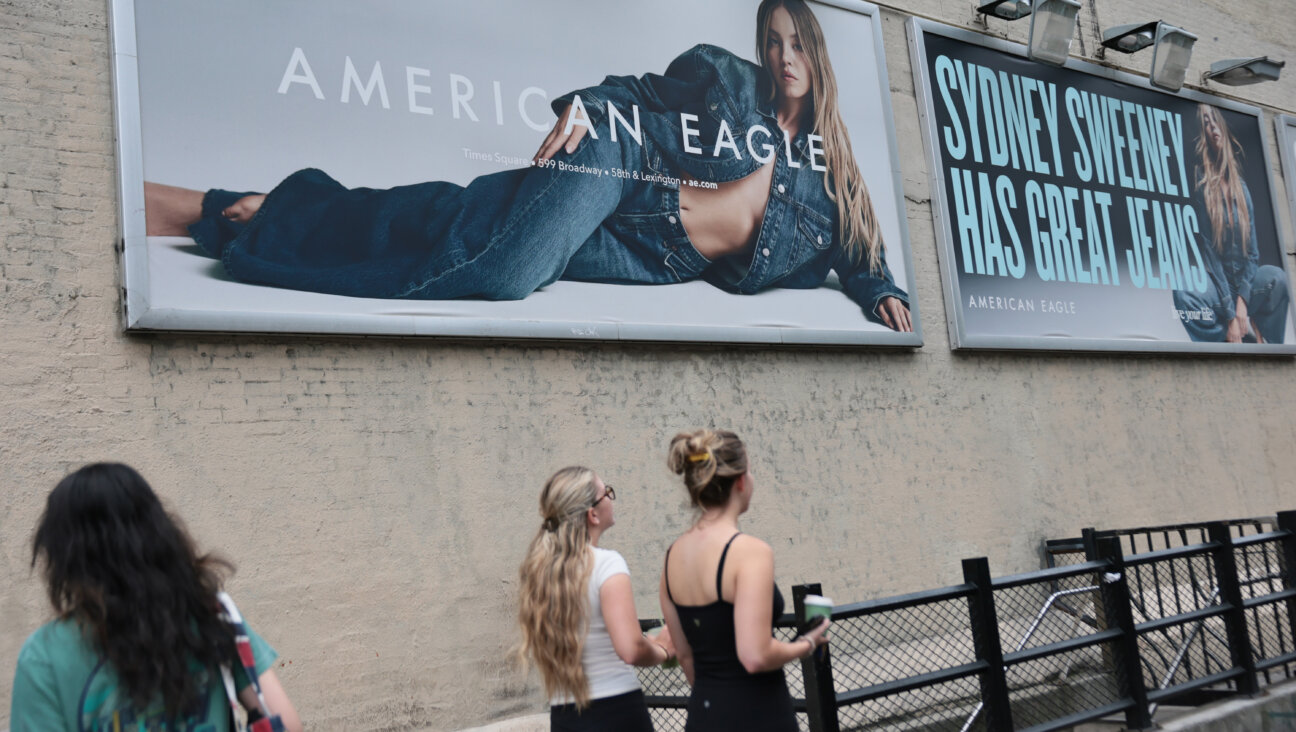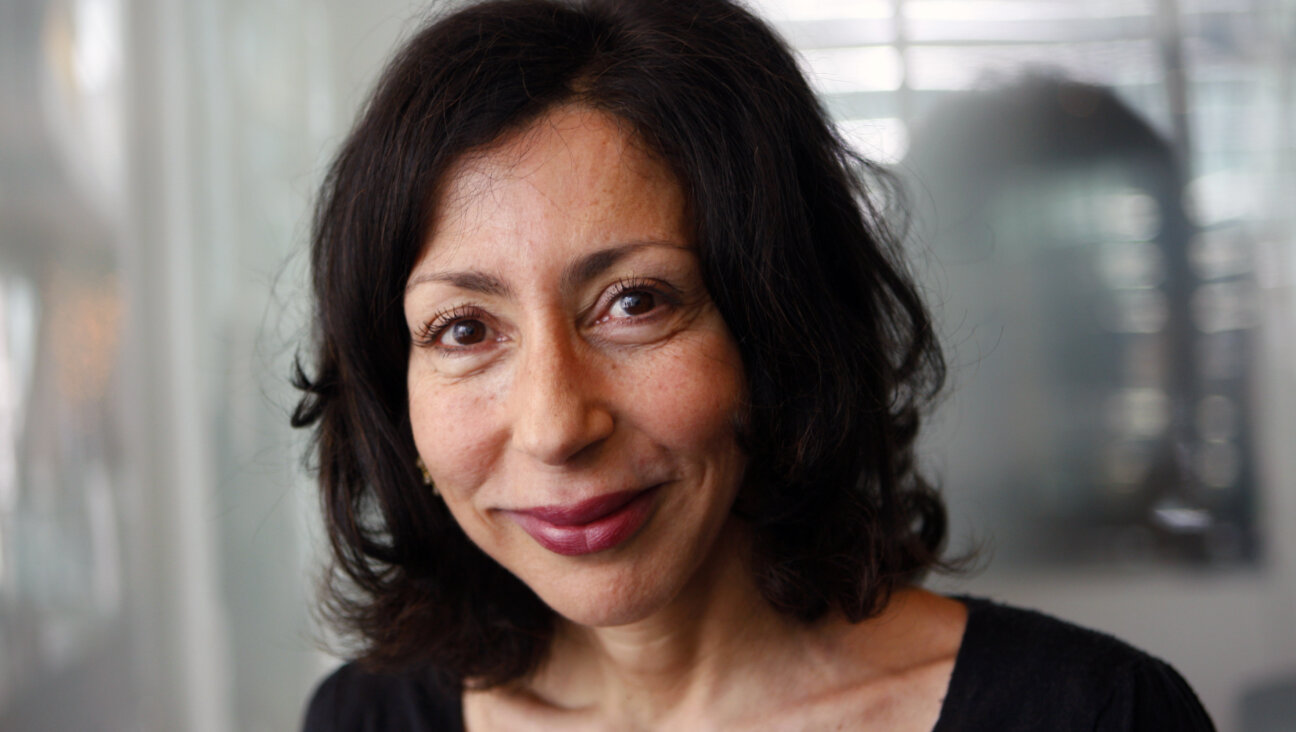Facing the greatest challenge of his life, a beloved artist and teacher is taking a leap of faith
After suffering a stroke in 2021, Zvi Gotheiner can already envision his next moves

Graphic by Angelie Zaslavsky
Zvi Gotheiner greets every single student who logs onto Zoom for his ballet class. “Good morning,” he says, addressing each new arrival by name. “How’s the weather in Boston?” he might ask, or, “How were your performances?” Sometimes he adds a heartfelt, “So good to see you.” Everyone is welcome — and welcomed. To me, a newcomer, he extended the very same kindness. During this pre-class ritual, another one of Gotheiner’s students recently asked, “How were your walks this week?”
“Very good,” he replied. “I had a good walk yesterday, also outside in the street” — something he couldn’t have managed a year ago. “It’s alarming to walk long distances,” he added. “In the apartment I always walk in a little circle.”
Gotheiner, 70, has been teaching his beloved ballet classes in New York for 40 years. But in the last few years he has seen two major shifts. When COVID-19 came in March 2020, he could no longer gather with the dozens of dancers, many of them regulars, who flocked to his class at New York City Center six days a week. Suddenly, they could only meet virtually — Gotheiner, a pianist, and dancers, each in their own Zoom square.
A year later, in March 2021, classes ceased abruptly when Gotheiner had a stroke. In a time of so much uncertainty, Gotheiner and the community that had grown around him were faced with another destabilizing event and a looming question: What happens next?
Gotheiner has been determined to make his way back to the movement and dance that bring him so much joy. Many of the dancers who know him best have never doubted he’d make it — perhaps slowly, but surely. In part, it seems, neither Gotheiner nor his dancers could allow themselves to consider any other outcome.
“I can see myself walking, and I can see myself teaching,” he said. “I’ll find a way to do those things.” He’s started to do both — the latter back on Zoom with the help of a dancer who demonstrates for him — and he’s already imagining his next steps.
‘Dance pulled me in’
Born in Israel in 1952 and raised on Kibbutz Mesilot in the north, Gotheiner was drawn first to music and folk dance. “On Friday night in the kibbutz, we used to dance for hours in a circle, and I loved it,” he told me during a Zoom interview. Then at 17, he saw his first professional dance performance by Batsheva Dance Company.
“It blew my mind. I was sitting on the edge of my chair and having an experience and never looked back,” he said. At the time, Gotheiner was a gifted violinist and the concertmaster with the Young Kibbutzim Orchestra but he would soon devote himself to dance. “It was like dance pulled me in and I was all consumed with it and I still, even now, love the art form, love the community that it creates, and I feel very fortunate,” he said.
Gotheiner went on to dance with Batsheva himself after serving in the army. In 1978, a scholarship from the America-Israel Cultural Foundation brought him to New York, where he danced with the Joyce Trisler Dance Company and Feld Ballets/NY and studied with renowned ballet teacher Maggie Black — whom he credits with “introducing me to a direction of thinking about the body in motion” that has fundamentally shaped his own approach to teaching.
“She observed that when the body is aligned well, there is an efficiency in movement that makes the movement simple, clear and fluid,” he said. “And I elaborate on that to try to understand why the body is not aligned and not just why but also find remedies.” In other classes, he said, “most of the communication I had with the teacher was that I’m not doing enough.” Usually, though, Gotheiner explained, the problem has nothing to do with lack of effort or strength, but rather the opposite — too much power manifesting as tension that inhibits and restricts movement.
To say Zvi Gotheiner became a beloved teacher himself feels like a gross understatement. A 2015 New York Times piece about “the Zen dance master of New York” reads like an ode to him. It points to the “large and unusually heterogenous following” he’s quietly and humbly amassed over the years — from ballet stars to modern and Broadway performers to adult recreational dancers who return over and over again.
‘Something that felt like home’
When Gotheiner came to teach in Israel for a couple weeks in 1982, Galia Lever was dancing with Batsheva. She’d come to dance late and struggled with technique, but she finally understood “how I, as I am, can fulfill my natural potential,” she said, speaking in Hebrew from her home in Tel Aviv. It was a revelation, she recalled. “I felt from day to day that I could suddenly see the light.” She barely knew Gotheiner when he invited her to join a new company he was forming, but she left Batsheva to do it. “This is how I want to learn and this is how I want to dance,” she remembered thinking. “And I didn’t regret it ever.”
Decades later, Doron Perk took Gotheiner’s class on his second day in New York. At 26, he’d already danced with Batsheva the Young Ensemble as well as in Europe and wasn’t sure what he wanted to do next. So he planned to travel and figure it out. In Gotheiner’s class, “I immediately fell in love with the training and it felt like something I could do every day,” he said, which was more than he could say for other ballet classes he’d taken. “The class makes sense,” he said, adding that he found himself drawn to the simplicity and the logical progression of exercises. So he went back every day that week. Gotheiner invited him to audition for his company, ZviDance, and offered him a job. Perk scrapped the rest of his travel plans and stayed. He’d found “something that felt like home very quickly,” he said.
Perk, now the company’s associate director, and others repeated some of the “Zvi-isms” Gotheiner is known to utter in his low, calm voice — sayings they’ve found apply both in class and outside of it. For example, “Don’t forget to breathe” and “Balance is where it’s easiest.” Alison Clancy, a veteran member of ZviDance, described Gotheiner as very quiet, but very present. “When he teaches, it’s not about him,” she said. “It’s about him facilitating an experience for his students.” It’s like he “actively uses recessive, receiving energy … that invites people to bloom.”
Clancy says she’d probably have quit dancing 10 years ago if not for Gotheiner. “Before I started training with him, I approached movement more from the outside in,” she said, trying to “fit my body and my personality and everything into these ideals of what I should be. And Zvi gave me permission to be myself and come at it from the inside out.” He helped her create a more sustainable relationship with her dancing. But moreover, she said, “he really always made room for the whole person.” Amid the chaos and hostility of New York City, “he created this beautiful, sort of sacred home base.”
It didn’t take long to see for myself what draws so many students to Zvi’s classes — just one, to be exact. It had been months since I’d had a ballet class routine and as we began to move, I felt dormant muscles awaken in just the right sequence, at just the right pace. I could certainly feel the sweat dripping down my face as we performed every exercise twice. The first time, as dancer Chelsea Ainsworth told me later, is often slower, offering a chance “to learn shapes and patterns and gateways,” so that “the second time, your body builds the ownership and understanding of the exercise.”
I may have had limited space at home — using one chair as a barre with my laptop propped open on another — but the satisfying flow of steps made me feel like I was truly dancing. And best of all, the anxiety that had been sitting in my chest and shoulders filtered out through my fingers and feet, dissipating with each step. By the time it was over, I was spent, but I felt like I could breathe deeper. And I knew I had to come back.
‘My body did not respond to me’
One evening last spring, Gotheiner was sitting at his computer when he noticed the fingers of his left hand weren’t responding as usual. He called his partner over. “Amos, I think I’m not right,” he told him. “He just massaged my arm and I was all right. And we went to sleep,” he said. But when he woke up in the morning, he couldn’t walk. When he tried, he fell to the floor. They called an ambulance.
“I was so scared. My body did not respond to me. They asked me to sit on the edge of the bed, and I was falling sideways. I had no balance, couldn’t stand up, couldn’t walk,” he recalled. “You take for granted your body, your movement, your capacity to wake up in the morning and put the foot on the floor, then another foot, and then walk. That’s something now I don’t take for granted.”
There was no immediate announcement to his company or otherwise, but news of Gotheiner’s stroke soon spread. His community jumped into action. Dancers reached out to his partner to ask what they could do to help. And an ad hoc committee that included Clancy organized a fundraiser.
“Zvi has been so generous to so many of us,” they wrote in the GoFundMe campaign description. “He has helped us recover from injuries, offered us class on holidays, allowed us to take class even when we cannot afford to pay. His teaching reminds us why we love to dance — and why dance matters. He inspires us to move generously, care for ourselves, and care for others.” It was time, they said, to care for him.
Donations and messages poured in, surpassing the campaign’s initial goal within days. To date, the effort has raised more than $100,000 to help with medical and rehabilitation bills, living expenses and more. American Ballet Theatre principal Gillian Murphy told me in a message she took Gotheiner’s class weekly for years before the pandemic because it’s “holistic, centering, original, and fun.” Choreographer and MacArthur genius grant winner Kyle Abraham said in an email that “his class has always been a communal space where all were welcome — and inspired.”
Though the performing arts were strapped and struggling under the weight of the pandemic, no one I spoke to was the least bit surprised to see the massive show of support. Except perhaps Gotheiner himself, who seems genuinely oblivious of just how treasured he is. “It’s very moving, the power of this community to come together and support one of its own,” he said.
‘Eventually I will do that also’
A few months into stroke recovery, Gotheiner fell at home and broke his leg, a setback that required surgery. As he came off anesthesia following the procedure, he was teaching deliriously in the recovery room, his partner told him, muttering sequences of steps out loud to the students in his imagination. “I feel like that kind of tells you how embedded teaching is in my life forces,” Gotheiner said.
It would be a few more months, however, before he returned to his post. The work of recovery has been hard and progress slow, but Gotheiner has been dogged in its pursuit. “I’m like a baby. I have to learn to walk, learn to move my arm, to hold a cup, to move it up to my mouth. It is so interesting,” he said, explaining that he’s put himself in the position of a student absorbing information. “I see the whole routine as an opportunity for me to get a better understanding of something, which I can’t articulate now what it is.”
He has a team of therapists who are “lovingly guiding me,” he said. The first time one of them asked him to try to take a step with the aid of a walker, he said, “I stood up and my left leg would not move an inch. It was like nothing there. She had to be on the floor and move my leg for me. The day after it was a little kick there in the knee that allowed me to do some steps on my own.”
When Ainsworth came to visit earlier this spring, he gave her a little demonstration. “Come in, come in,” she remembered him saying to her. “Do you want to see my performance?” Of course she did, and took her place on the couch as the one-woman audience to a show in three acts. Act one: walking with a cane. Act two: walking hand-in-hand with his partner. Act three: walking alone. She applauded after each feat.
For the first few months, Gotheiner had been homebound in their second-floor apartment. By the time we spoke in late May, he could get down the stairs himself. “On the way up, I need some assistance. But eventually I will do that also,” he said.
In the meantime, he practices. “I’m privileged to be a dancer in that that kind of physical work to get better is something that’s familiar to me,” he said. And while navigating everyday tasks takes more thought, designing those new patterns is not so unfamiliar either. “It’s all a little more elaborate,” he said. “You need to choreograph every aspect of it.”
‘I am not done yet’
On a Thursday night in November 2021, Gotheiner sat in the theater at New York Live Arts and witnessed his newest work come alive on stage. He and his dancers had finished creating “The Art of Fugue” several weeks before his stroke and filmed it in January 2021 during a residency at Montclair State University. But theaters had since reopened and his dancers had pulled together in his absence to prepare the piece for its live premiere.
“Oh my goodness, I was crying the whole time,” Gotheiner said. “It reminded me again, like I am not done yet. I still have ideas, I still want to be in the studio and evolve in the mystery of creation, of making something from nothing. It was really wonderful.”
Knowledge of Gotheiner’s stroke, wrote New York Times dance critic Brian Seibert, “changed the work. More than before, the dance registered as a fight to keep moving.” When it came time for bows, Gotheiner joined his dancers on stage. As the audience applauded, he stood up out of his wheelchair. The moment, Seibert wrote, was “theatrical and over the top and entirely persuasive.”
Less than two weeks later, Gotheiner held a Zoom class for the first time in eight months. The stroke had impacted his speech, but he’d been exercising his voice vigorously and wanted to try to use it to teach again. Ainsworth would demonstrate. “I didn’t know that I’m ready. I was nervous about it,” he said. “I was afraid that I will not be able to physically sustain it. But I love teaching and it is a great feeling being useful.”
So many students have relied on Gotheiner over the years to be there with his regular classes no matter what. Now they’ve returned. “I feel like it’s allowing him to come back to himself,” Ainsworth said. “It’s motivating him. It’s giving him something to look forward to and also a way to see his community in a safe way every other day.” She believes the complex patterns and combinations of steps he’s continued to create are also contributing to his recovery — like the ballet equivalent of word puzzles. Plus, Ainsworth said, “his silliness is starting to come back and his humor. So that’s been really fun to see.”
Gotheiner has made huge strides in the 16 months since his stroke. And he keeps looking ahead. He’s poised to begin collaborating with his dancers on a new work titled “Migrations,” drawing on “inspiration from birds’ movement to reflect on humans in flux” and slated to premiere in November 2022. The process may look a little different this time around, but the prospect of invention and reinvention is exhilarating. “I can’t wait,” Gotheiner said, laughing with glee. And he’s already having conversations about bringing his class back into the studio in November, too.
“It is exactly what it needs to be right now,” Ainsworth said. But she, too, can already imagine Gotheiner’s return to the studio: “That’s going to just be like a party, with the pianist in the room, Zvi sitting in the front in his chair, tapping his leg to the beat, walking around” — and reminding everyone once again in his steady, reassuring voice, “Don’t forget to breathe.”

















